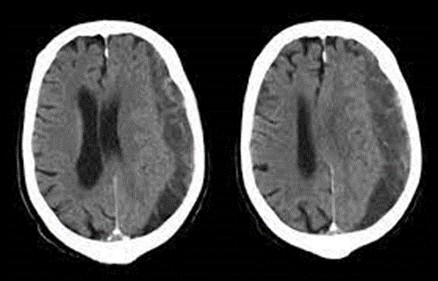A nurse is contributing to the plan of care for a client who is starting bowel training for the management of fecal incontinence. Which of the following interventions should the nurse recommend?
Assist the client to the restroom 30 min after meals.
Limit the client's physical activity until bowel continence is achieved.
Limit the client's fluid intake to 1500 mL/day.
Instruct the client to limit their intake of high-fiber foods
The Correct Answer is A
Choice A Reason:
Assisting the client to the restroom 30 minutes after meals is correct recommendation. This intervention aligns with the natural response of the gastrocolic reflex, which often leads to increased colonic motility after eating. Timing the restroom visit to this period can take advantage of the body's natural tendency to have a bowel movement after meals, potentially aiding in achieving bowel continence.
Choice B Reason:
Limiting the client's physical activity until bowel continence is achieved is not appropriate. Physical activity can actually stimulate bowel function and regularity. Moderate physical activity, as appropriate for the client's condition, can promote regular bowel movements. Restricting physical activity might hinder the overall success of bowel training.
Choice C Reason:
Limiting the client's fluid intake to 1500 mL/day is not appropriate. Adequate hydration is crucial for bowel health and regularity. Limiting fluid intake could lead to dehydration and constipation, which can exacerbate fecal incontinence. It's important to encourage adequate hydration unless there are specific medical reasons to restrict fluids.
Choice D Reason:
Instructing the client to limit their intake of high-fiber foods is incorrect. High-fiber foods are beneficial for bowel regularity and can help manage fecal incontinence by promoting healthy bowel movements. Limiting high-fiber foods could potentially lead to constipation or exacerbate the issue of fecal incontinence.
Nursing Test Bank
Naxlex Comprehensive Predictor Exams
Related Questions
Correct Answer is C
Explanation
Choice A Reason:
Experiences nocturia is incorrect. Nocturia (waking up at night to urinate) is a common symptom and, while it's important to address for the client's comfort and potential underlying causes, it doesn't pose an immediate risk to the client's roommate or necessitate urgent intervention in a shared room setting.
Choice B Reason:
History of generalized anxiety disorder is incorrect. A history of generalized anxiety disorder is relevant to the client's mental health and overall care. However, in the context of a shared room, it might not require immediate attention or interventions that directly impact the roommate's health or safety.
Choice C Reason:
Recent exposure to tuberculosis is correct. Tuberculosis (TB) is an infectious disease that spreads through the air when an infected person coughs or sneezes. In a shared room, a history of recent exposure to TB is a significant concern as it poses a potential risk to both the client and the roommate. Immediate measures to prevent transmission and ensure proper isolation protocols are necessary to protect the health of both individuals in the shared space.
Choice D Reason:
Reports periodic migraine headaches is correct.
Periodic migraine headaches are a health concern for the client experiencing them, but they typically do not pose an immediate risk or concern for the client's roommate. While addressing pain management is important, it might not require immediate action in the shared room environment.
Correct Answer is A
Explanation
Choice A Reason:
The client has a delayed response to verbal commands. This finding can indicate increased intracranial pressure. Changes in responsiveness, such as delayed responses to verbal commands or other stimuli, can be indicative of neurological impairment due to elevated pressure within the skull.
Choice B Reason:
The client has ecchymosis around the eyes. Ecchymosis around the eyes (raccoon eyes) can occur with certain head injuries, but it's not a direct sign of increased intracranial pressure. It's more commonly associated with basilar skull fractures rather than specifically reflecting increased pressure within the skull.
Choice C Reason:
The client is unable to remember details of the motor-vehicle crash. Memory impairment or amnesia regarding the event can occur due to head trauma, but it might not directly correlate with an increase in intracranial pressure. It's more related to the effects of the injury on memory function.
Choice D Reason:
The client reports ringing in the ears. Tinnitus or ringing in the ears might occur in some cases of head trauma but is not a direct indicator of increased intracranial pressure. It might result from the impact of the injury or other associated factors.

Whether you are a student looking to ace your exams or a practicing nurse seeking to enhance your expertise , our nursing education contents will empower you with the confidence and competence to make a difference in the lives of patients and become a respected leader in the healthcare field.
Visit Naxlex, invest in your future and unlock endless possibilities with our unparalleled nursing education contents today
Report Wrong Answer on the Current Question
Do you disagree with the answer? If yes, what is your expected answer? Explain.
Kindly be descriptive with the issue you are facing.
